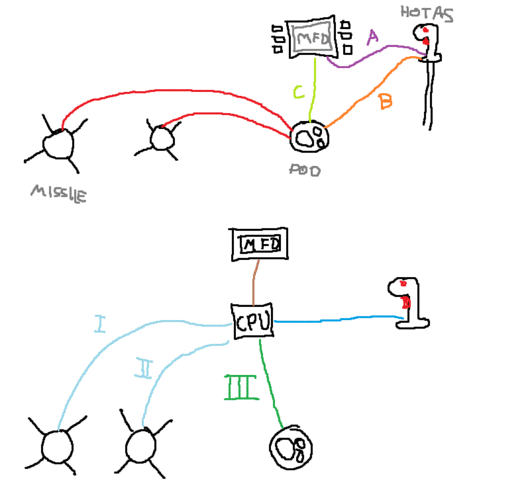The targeting pods are important part of the modern fighters capabilities for strike missions.
And they have become more capable in the last decade with side-looking AESA radars and data-links to deliver imagery and video to ground troops as well to other participants, so pilot doesn't need to verbally tell what they are seeing but can just send a pictures and video to ground units, that then can even draw on them and send it back. So pilot gets visually a hand drawn symbols that where something is in the targeting pods video.
But what are the more modern targeting pods capabilities really?

 defense-update.com
defense-update.com
There is a claim on the Digital Combat Simulation forum that Litening G4 is capable to control and launch Maverick missiles, independently from the aircraft avionics.
Does this mean that such targeting pods has received capabilities to now be mounted on any aircraft and then the weapons as well and the Litening targeting pod can be used to launch and guide those missiles?
As it would make it very cheap way to arm any aircraft to be A-G capable when the Litening G4 can perform the weapons systems duties.
The company behind this idea (Razbam) is claiming that Litening G4 has such capabilities for pilot to control via HOTAS and its 4-way Sensor Select Switch:
UP = LTIP (Laser Target Imaging Program, a Short-Wave Infrared Laser Augmented Imaging)
UP Long = Switch to Laser Maverick and control and launch it.
Right = FLIR polarization
Right Long = CCD / FLIR
Down = Point Track / Area Track
Down Long = INR (Inertia) track mode
Left = Zoom In / Out
Left Long = Begin LSS / LST (Laser Spot Search and Laser Spot Track)
Does anyone have information that what other features and capabilities a such advanced targeting pod can have than control the weapons like Mavericks and does such make possible to weaponize in wartime a civilian aircraft to perform a cheap ground attack missions?
And they have become more capable in the last decade with side-looking AESA radars and data-links to deliver imagery and video to ground troops as well to other participants, so pilot doesn't need to verbally tell what they are seeing but can just send a pictures and video to ground units, that then can even draw on them and send it back. So pilot gets visually a hand drawn symbols that where something is in the targeting pods video.
But what are the more modern targeting pods capabilities really?

Northrop Grumman Delivers Litening G4 Advanced Targeting Pods - Defense Update:
The Northrop Grumman Corporation has completed delivery of the first 50 Litening G4 Advanced Targeting Pods under a U.S. Air Force contract. Litening G4 offers enhanced imaging capability, with wider field of view, better target identification at longer ranges than previous versions. The new pod...
There is a claim on the Digital Combat Simulation forum that Litening G4 is capable to control and launch Maverick missiles, independently from the aircraft avionics.
Does this mean that such targeting pods has received capabilities to now be mounted on any aircraft and then the weapons as well and the Litening targeting pod can be used to launch and guide those missiles?
As it would make it very cheap way to arm any aircraft to be A-G capable when the Litening G4 can perform the weapons systems duties.
The company behind this idea (Razbam) is claiming that Litening G4 has such capabilities for pilot to control via HOTAS and its 4-way Sensor Select Switch:
UP = LTIP (Laser Target Imaging Program, a Short-Wave Infrared Laser Augmented Imaging)
UP Long = Switch to Laser Maverick and control and launch it.
Right = FLIR polarization
Right Long = CCD / FLIR
Down = Point Track / Area Track
Down Long = INR (Inertia) track mode
Left = Zoom In / Out
Left Long = Begin LSS / LST (Laser Spot Search and Laser Spot Track)
Does anyone have information that what other features and capabilities a such advanced targeting pod can have than control the weapons like Mavericks and does such make possible to weaponize in wartime a civilian aircraft to perform a cheap ground attack missions?


